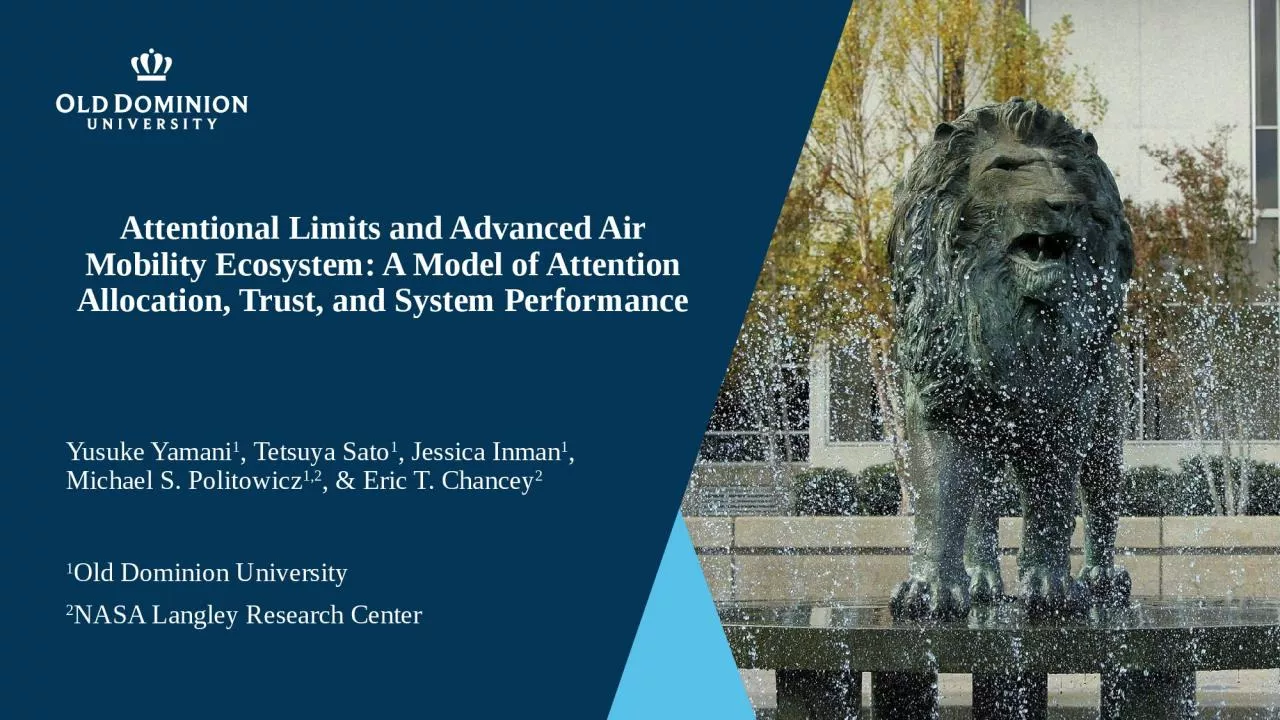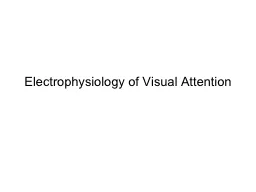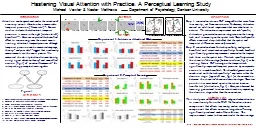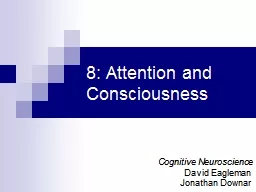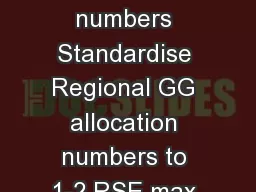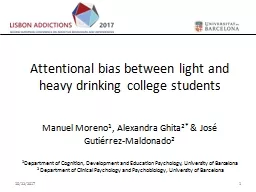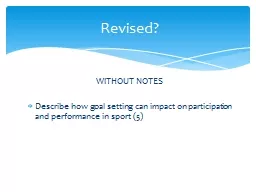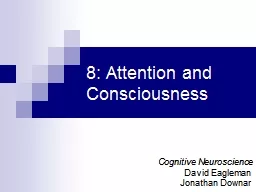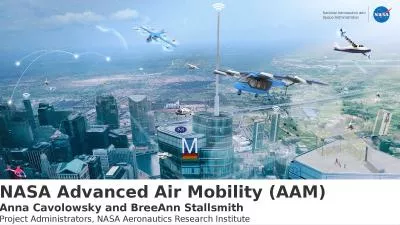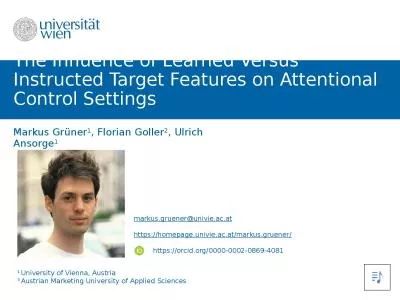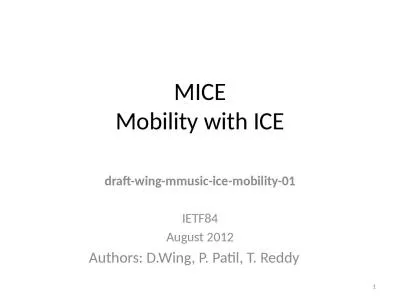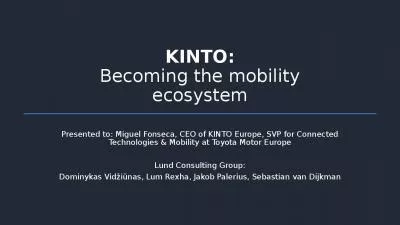PPT-Attentional Limits and Advanced Air Mobility Ecosystem: A Model of Attention Allocation,
Author : oryan | Published Date : 2024-01-29
Yusuke Yamani 1 Tetsuya Sato 1 Jessica Inman 1 Michael S Politowicz 12 amp Eric T Chancey 2 1 Old Dominion University 2 NASA Langley Research Center 2 AAM applications
Presentation Embed Code
Download Presentation
Download Presentation The PPT/PDF document "Attentional Limits and Advanced Air Mobi..." is the property of its rightful owner. Permission is granted to download and print the materials on this website for personal, non-commercial use only, and to display it on your personal computer provided you do not modify the materials and that you retain all copyright notices contained in the materials. By downloading content from our website, you accept the terms of this agreement.
Attentional Limits and Advanced Air Mobility Ecosystem: A Model of Attention Allocation,: Transcript
Download Rules Of Document
"Attentional Limits and Advanced Air Mobility Ecosystem: A Model of Attention Allocation,"The content belongs to its owner. You may download and print it for personal use, without modification, and keep all copyright notices. By downloading, you agree to these terms.
Related Documents

